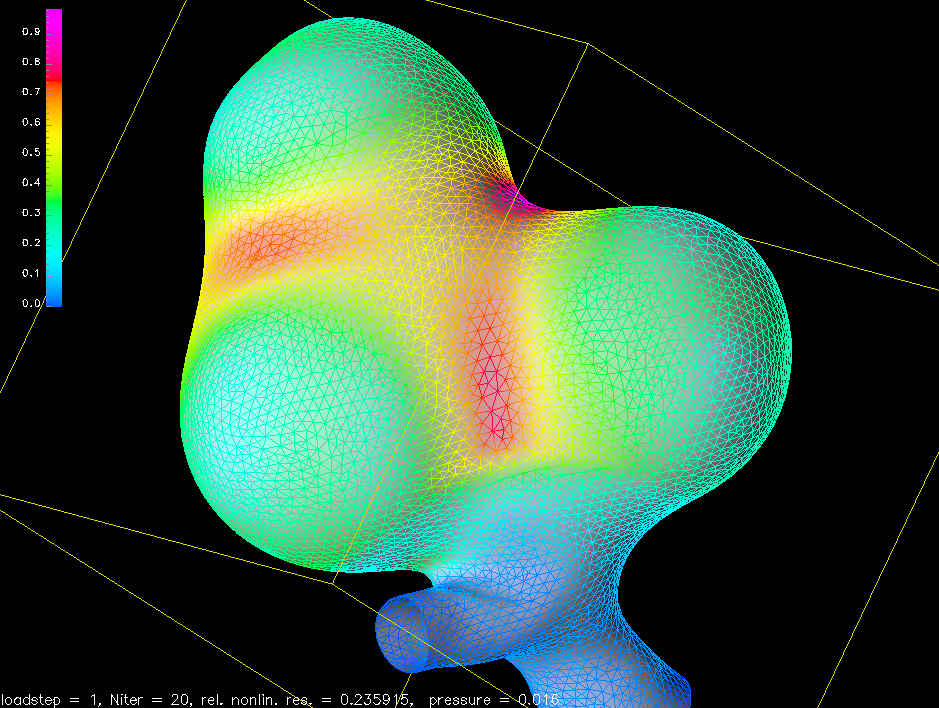
Case Study: Modelling choices for simulating brain aneurysms
This case study describes my contribution within the context of the project's relevant results. My work for @neurIST took part mostly during my time at NEC and was finished at CMM as subcontract work for the project.
Many open modelling questions ...
A number of modelling choices had to be made before the processing of those hundreds of cases started in serious. For instance, should moving walls for the blood flow simulation be taken into account? How to get realistic boundary conditions at the inlets? At what resolution should the simulations be run?
The project spelt out, and discussed, the relevant open questions in a comprehensive document, called "Analysis Protocol Version 1". This document contained a specification of the core processes and data entities of the simulation chain. It identified a number of questions to be answered by further research, like sensitivity studies.
Some of the world's leading experts in biomechanics of aneurysms reviewed this first version. @neurIST combined their advice with results from our intermediate research and sensitivity studies, to define version 2 of the Analysis Protocol. This version fixes all relevant modelling choices, and, at a high level, contains precise descriptions of the individual stages of the three analysis work flows (shape, blood flow and wall mechanics).
... and (some) answers


It must be clear however, that some of the modelling questions have no simple "right" answer. Quite possibly, it may turn out that alternative decisions are more appropriate or should be considered as well. Given the large amount of work (several man years) spent with processing all these hundreds of cases, the question immediately arises how this work can be leveraged in later revisions, variants or additions to the analysis protocol.
The project addressed this data management issue by creating a general model of the data and by implementing appropriate means to store high-level data and analysis prescriptions in a way that makes future uptake practical. The part describing a data model for biomechanical simulations contains details on the approach taken.
My role in defining the biomechanical modelling approach
I contributed to the first version of the analysis protocol. An integral part of my work was a complete specification of the toolchain processes and data entities. This work laid ground for the development of the toolchain and definition of interfaces between the different stages.
CMM was contracted by the project to revise the specifications, and to author the final version of the analysis protocol, incorporating the data model developments, final specifications, reviewer feedback and the intermediate studies and research.